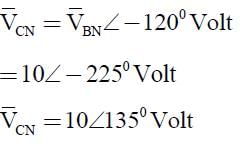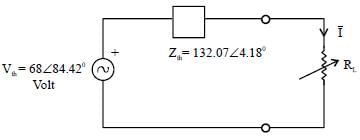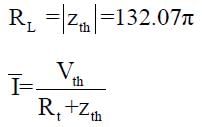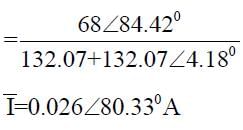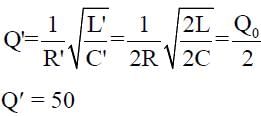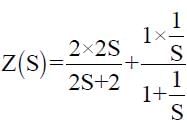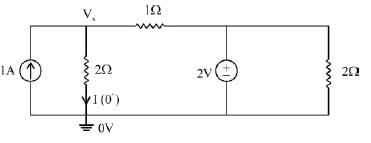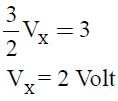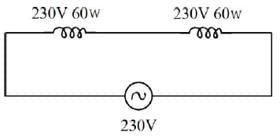Test: Network Theory - Electrical Engineering (EE) MCQ
25 Questions MCQ Test Electrical Engineering SSC JE (Technical) - Test: Network Theory
Which of the following is not the energy stored in a capacitor?
A voltage source of 20 sinπt V is connected across 10kΩ resistor. What is the current flow through the resistor?
The switch of below circuit was open for long and at t = 0 it is closed. What is the final steady state voltage across the capacitor and the time constant of the circuit?
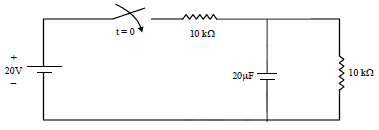
The power consumed by a coil is 300 W when connected to 30 V dc source and 108 W. When connected to a 30 V A.C. source. The reactance of the coil is:
For a transmission line open circuit and short circuit impedances are 20 Ω and 5 Ω. Then characteristic impedance is:
A human nerve cell has an open circuit voltage of 80 mV and it can deliver a current of 5 nA through a 6 MΩ load. What is the maximum power available from the cell?
The Thevenin impedance across the terminal AB of the given network is:
The circuit shown in the figure Rg is variable between 3 and 30 ohms RL being fixed.
Assertion (A): For Maximum power transfer across the terminals AB, Rg = 3?
Reason (R): When Maximum power transfer occurs RL = |Zg|
A line to neutral voltage is 10∠150V for a balanced three phase star connected load with phase sequence ABC. The voltage of line B with respect to line C is given by:
Determine Maximum power consumed in the load resistance RL _____ (in watts)
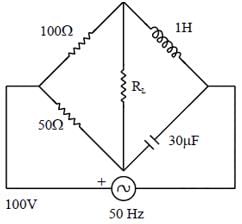
(Important - Enter only the numerical value in the answer)
A series R-L-C circuit resonates at 4Hz it provides 0.707 lag P.F. at 8 Hz. The frequency at which it gives 0.707 lead P.F is?
In series RLC circuit, the voltage across capacitor and inductor are ______ with each other.
A series R-L-C circuit has a resonance frequency of 1kHz and a quality factor Q = 100. If each of R, L and C is doubled from its original value then new Q of the circuit is:
A 25 Ω resistor has a voltage of 150 sin377 t. Find the corresponding power.
Consider the following function:
1.
2.
3.
4.
Which of the above function are LC driving point impedances?
If an RC driving point impedance function Z(S) has an equal number of poles and zero’s at finite locations then:
For the circuit shown below the pole’s of the driving point impedance function are at which one of the following location?
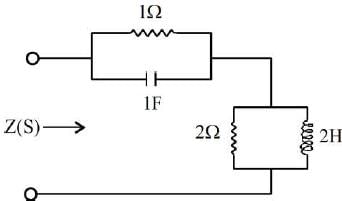
The voltage and current wave functions for an element are shown in the figures.

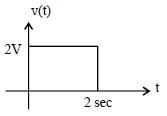
The circuit element and its value are:
The steady state in the circuit shown in the given figure is reached with S open. S is closed at t = 0. The current I at t = 0+ is:
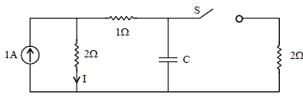
Identify which of the following is not a tree of the graph shown in figure.
What is the power loss in the 10 Ω resistor in the network shown in the figure below?

Two lamps each of 230V and 60W rating are connected in series across a single phase 230V supply. The total power consumed by the two lamps would be:
For the R-L circuit shown the current i(t) for unit step input voltage will rise to 0.63 is:
|
23 videos|89 docs|42 tests
|




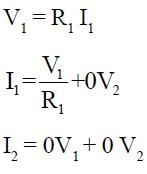

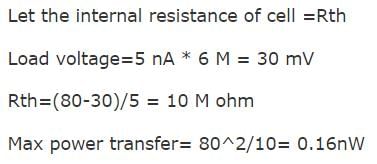




 = 10 ∠150 Volt
= 10 ∠150 Volt
